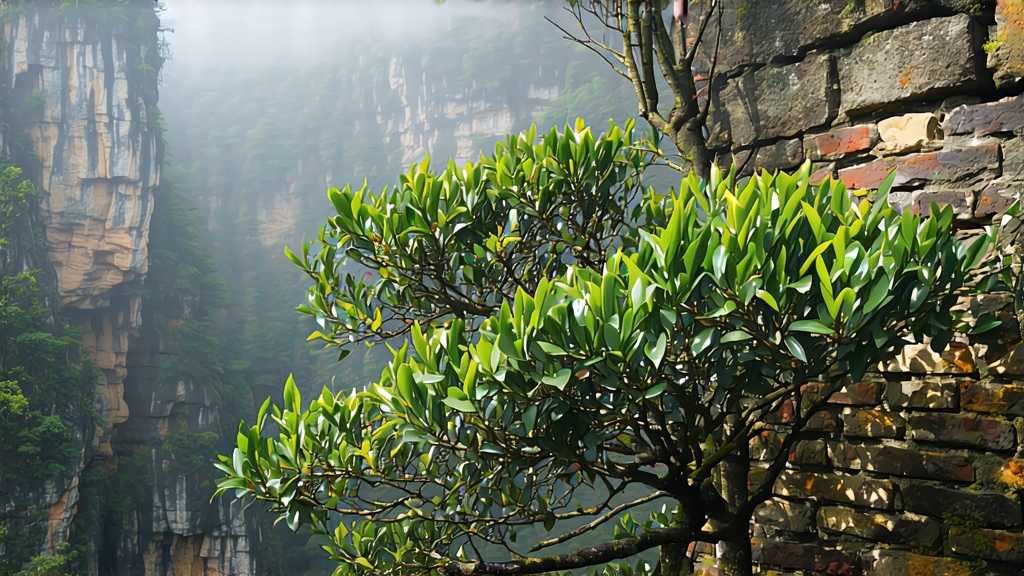
Tucked into the cloud-laced granite peaks of Guangdong’s Phoenix Mountain Range, Phoenix Dancong—literally “single-bush”—is less a tea than a living anthology of Chinese oolong artistry. Unlike bulk-cultivar teas that blanket hillsides in monoculture, every true Dancong traces its genealogy to a single centuries-old tree, each tree a micro-varietal that absorbed the mountain’s mineral mist and memorized it in leaf. To sip Dancong is therefore to drink a botanical autobiography: the cliff’s quartz content, the morning fog’s humidity, the charcoal master’s split-second decision on the fourth bake—all archived in one amber infusion.
Historical roots run astonishingly deep. Song-dynasty chronicles from 960 CE already mention “Bird’s-Beak Tea,” tribute leaves so coveted that imperial couriers raced them north on relay horses. Local legend claims Song emperor Zhao Bing, fleeing Mongol fleets, paused at Wudong peak and—parched—accepted a bowl of tea from a monk; the sovereign’s sigh of relief supposedly christened the tea “Song Zhong,” still the most prestigious Dancong sub-cultivar. Ming-era gazetteers record 28 distinct aromatic profiles, prefiguring today’s perfumed lexicon of honeysuckle, almond milk, ginger flower, and alpine orchid. By the late Qing, Dancong had become the silent currency of Chaozhou merchants, who financed entire trading junks with sealed bamboo tubes of Wudong tea, confident the leaves would appreciate like jade across the South China Sea.
Botanically, Dancong belongs to the Camellia sinensis var. sinensis species, yet within that frame lies a fractal diversity. Government clonal registries list more than 80 recognized aromatic “fragrance types,” each tied to a mother tree. The most celebrated include:
- Huang Zhi Xiang (gardenia aroma) – pale liquor, top-note sweetness, lingering coolness on the tongue tip.
- Mi Lan Xiang (honey-orchid) – deeper amber, syrupy body, tropical bouquet that expands in the throat.
- Zhi Yu Xiang (ginger-lily) – peppery lift, mineral spine, finishes with a snap of green mango.
- Ya Shi Xiang (duck-shit aroma) – the deliberately vulgar name guards against theft; cup profile is creamy apricot with a faint ferric snap reminiscent of wet slate.
- Song Zhong (Song dynasty ancestor) – the tallest old tree, yielding a tea both incense-smoky and lychee-sweet, with a cooling menthol echo that arrives minutes after swallowing.
Crafting Dancong is a high-wire act between oxidation and fragrance retention. Picking begins at dawn when mountain dew is still evaporating; two leaves and a bud are snapped, never cut, to keep cell walls intact. The first solar withering lasts barely 20 minutes—just enough to soften the edges—before leaves are carried into shaded “green rooms” where they are alternately shaken and rested in bamboo trays. This bruising ritual, repeated every hour for up to 14 hours, triggers enzymatic oxidation at the leaf margins while the core stays green, creating the signature “green leaf with red border.” When the ambient aroma shifts from cut grass to ripe peach, the master halts oxidation with a 280 °C tumble in a cast-iron wok, hand-pressing leaves against hot metal for exactly 37 seconds—any longer and gardenia volatiles vaporize.
Rolling follows, but Chaozhou artisans use a unique “dragon-and-phoenix” motion: palms press, fingers twist, wrists lift, imitating the calligraphic stroke of the Chinese character 鳳 (phoenix). The tight spirals lock in oils that will later unfurl like origami in hot water. Then comes the most mythic stage—charcoal baking. In subterranean kilns, lychee-wood embers glow at 60 °C for eight hours, rest for 48, reheat at 50 °C for six, rest again. The cycle repeats up to five times over 45 days, each bake lowering moisture by 2 % while layering warm spice notes. The final leaf contains only 3 % water, feels light as moth wings, yet carries a concentration of aroma molecules 30 times higher than green tea.
To brew Dancong authentically, one must bow to the gongfu ethos: small vessels, big leaves, short steeps. A 100 ml Chaozhou red-clay